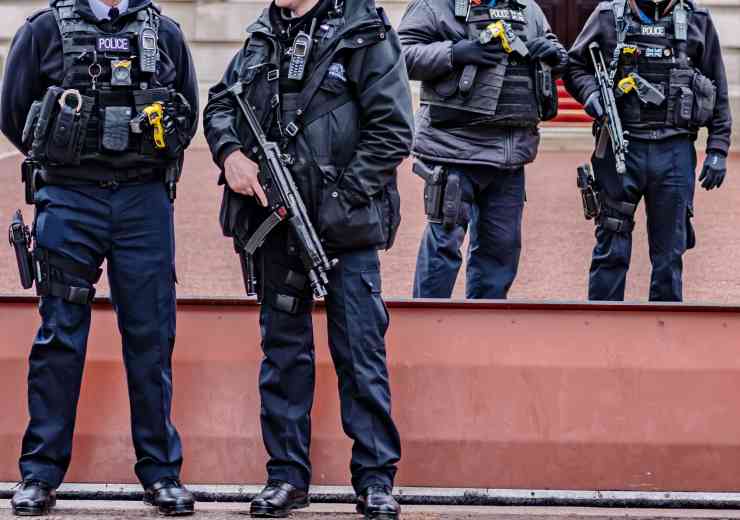What’s going wrong with US counter terrorism?
Found wanting in its handling of the Christmas Day airliner bombing incident, the Department for Homeland Security (DHS) hastily revised certain of its procedures to stop those with intent to harm getting on planes, but neglected to ensure the air carriers receiving the information read it in timely fashion. The result being that one of the country’s most wanted very nearly escaped by plane following the attempted bombing of Time Square in the heat of down-town New York city at the beginning of May.
This doesn’t amount to a good resume of skills for a government department that has a US$55.1 billion budget currently and is charged with overseeing an “integrated, effective and efficient approach” to enhanced national security.
Rumour has it that the man occupying the seat where the buck really does stop, President Obama, is incensed at DHS’ inability to stop the bad guys doing bad things on his watch and has been demanding answers from its top brass. But a very real question mark hangs over whether he’ll get fact or fiction from a government department so clearly out of touch with reality?
The gaff prone boss at the Department for Homeland Security (DHS), Janet Napolitano, has been singled for much ridicule in the US media, given that her initial public comment on both incidents has given the impression she had a tenuous grasp on the nature of the threats unfolding around her, as well as an inability to assimilate facts in the fast paced investigations that followed.
Perhaps her most famous error of judgement came over the Christmas period when she stupidly claimed that Umar Farouk Abdulmutallab’s failed airline bombing attempt, was proof positive that the security system had worked. In the more recent incident she has once again been castigated for foolishly arguing that the failed Time Square car bombing was probably the work of a lone individual with no terrorist affiliation.
In a nation and more specifically a seat of government that is so obsessed with spin, such gaffs can perhaps be excused away as the nature of the beast. But while the media focuses its ire on accident prone personalities, it is missing the fundamental issue that these two incidents show succinctly that US counter terrorism strategy is failing to deliver the goods.
Disconnected dots
Napolitano announced in early April that, effective immediately, the Transportation Security Administration (TSA), the responsible agency within her department, would require new enhanced security measures to be implemented by all air carriers with international flights to the United States.
“These new measures utilise real-time, threat-based intelligence along with multiple, random layers of security, both seen and unseen, to more effectively mitigate evolving terrorist threats,” she said at the time.
After the spin has been distilled what’s left doesn’t amount to very much at all. Sure, there’s been a modifying of the processes used to create “No Fly” and “Selectee” watch lists as well as a redefining of the criteria by which names are added to such lists.
The new approach aims to use real time information about terrorist suspects, such as their recorded physical description, partial name or travel pattern, to match actual travellers with any or all of the numerous traits retained on databases. Those who match any or all of the criteria are then required to undergo additional screening measures before being allowed to fly to the United States. Napolitano, claimed at the time that this new regime “more surgically targets individuals of concern”, ensuring that those on the “No Fly” list are never able to board an aeroplane.
This was shown to be a spectacular failure, the moment that Faisal Shahzad stepped aboard Emirates flight EK202 at New York’s John F Kennedy (JFK) International Airport, on the evening of 2 May.
Chasing suspects
Faisal Shahzad is charged with perpetrating the attempted bombing in Time Square. To the JFK based Emirates check-in staff boarding passengers on EK202, he was just another last minute flier heading home from a leisure or business trip.
To the Federal Bureau of Information (FBI) he was quite simply the most wanted man in the country. That he was sitting in a seat aboard a plane already taxiing for take-off when his presence was discovered, speaks volumes of the capability of the system to prevent him from almost escaping justice. Available information about the sequence of events leading to his arrest paints a damning picture of systemic failure by intelligence services and law enforcement.
Following a weekend of feverish activity by both intelligence and law enforcement agencies to track down the person or persons responsible for the attempted bombing, he had not only been placed under surveillance but his name had been entered into the “No Fly” list as a known and most wanted individual. Yet he was able to drive to the airport, book his flight via cellphone en-route, pay for his ticket in cash on arrival, check-in, pass through immigration and security controls and actually board the aircraft without anyone as much as batting an eyelid.
The list of failures was both impressive and depressing:
- The FBI had been tasked with covert surveillance but reportedly lost contact with him as he fled to JFK.
- His cellphone number was apparently known to the authorities, though activity seemingly wasn’t being actively monitored in real time.
- His name had been added to the “No Fly” list, but no method apparently existed to flash update airline reservation systems to be on the lookout.
- Emirates, his airline of choice, queried neither his late booking nor method of payment.
- Borders & Customs (BCP) and Transportation Security Administration (TSA) failed to spot him subsequent to check-in and prior to boarding.
It took the eagle eye of a single Borders & Customs Protection (BCP) officer physically checking the names of last minute passengers against the watch lists to finally connect the dots before the aircraft got airborne and outside US airspace.
Tweaking failure
The blame for such systemic failure is inevitably and always shifted sideways. In this instance blame has been shifted to airlines for apparently not having systems in place to update the watch lists and actively alert reservation and check-in personnel in real-time. It has been reported that watch lists typically took upward of a maximum 12 hours to be reported down the line to traveller facing personnel.
DHS, TSA and BCP cannot be absolved of blame collectively or independently though. Basic common sense dictates that where regulation is being changed, the regulator should first check that those who are regulated have the capability to comply. TSA instruction to airlines has retrospectively been tweaked and now requires airlines to update their systems every couple of hours.
Significant doubt remains as to whether the odd nip and tuck to a demonstrable failure is sufficient to ensure the bad guys don’t get on planes though, since this new though hurriedly revised policy still requires a decision being made by sometimes poorly trained private contractor staff on a minimum wage and going through the motions.
















